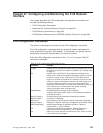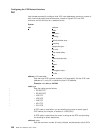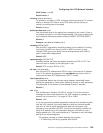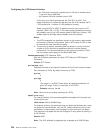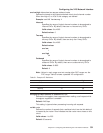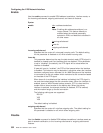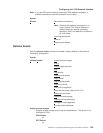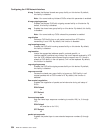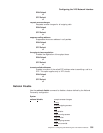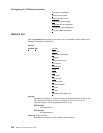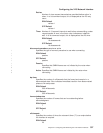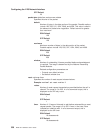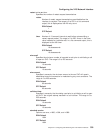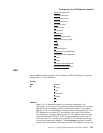bi-cug Enables the bilateral closed user group facility on this device. By default,
this facility is disabled.
Note: You cannot add any bilateral CUGs unless this parameter is enabled.
bi-cug-outgoing-access
Enables the bilateral CUG with outgoing access facility on this device. By
default, this facility is disabled.
cug Enables the closed user group facility on this device. By default, this facility
is disabled.
Note: You cannot add any CUGs unless this parameter is enabled.
cug-deletion
Deletes a CUG facility from a call packet received from XTP before
transmitting it over X.25. By default, this function is disabled.
cug-incoming-access
Enables the CUG with incoming access facility on this device. By default,
this facility is disabled.
cug-insertion
Inserts the appropriate (address-specific, protocol-specific, or
interface-specific) preferred cug number into a call request received by XTP
from the X.25 interface before transmitting the request over IP. If there is
already a CUG facility in the call packet, it will not be replaced. By default,
this function is disabled.
cug-outgoing-access
Enables the CUG with outgoing access facility on this device. By default,
this facility is disabled.
cug-zero-override
Causes the closed user group facility to ignore any CUG facility in call
request packets with a CUG number of 0. By default, this function is
disabled.
flow-control-negotiation
Enables the negotiation of packet and window size during call setup of
SVCs.
DDN Default
on
GTE Default
on
frame-ext-seq-mode
Sets the frame layer sequence numbering to modulo 128 (i.e., 0 through
127).
DDN Default
off (must be on for X.31)
GTE Default
off
packet-ext-seq-mode
Enables the packet layer to use extended sequence numbers (0 through
127).
Configuring the X.25 Network Interface
334
MRS V3.2 Software User’s Guide




